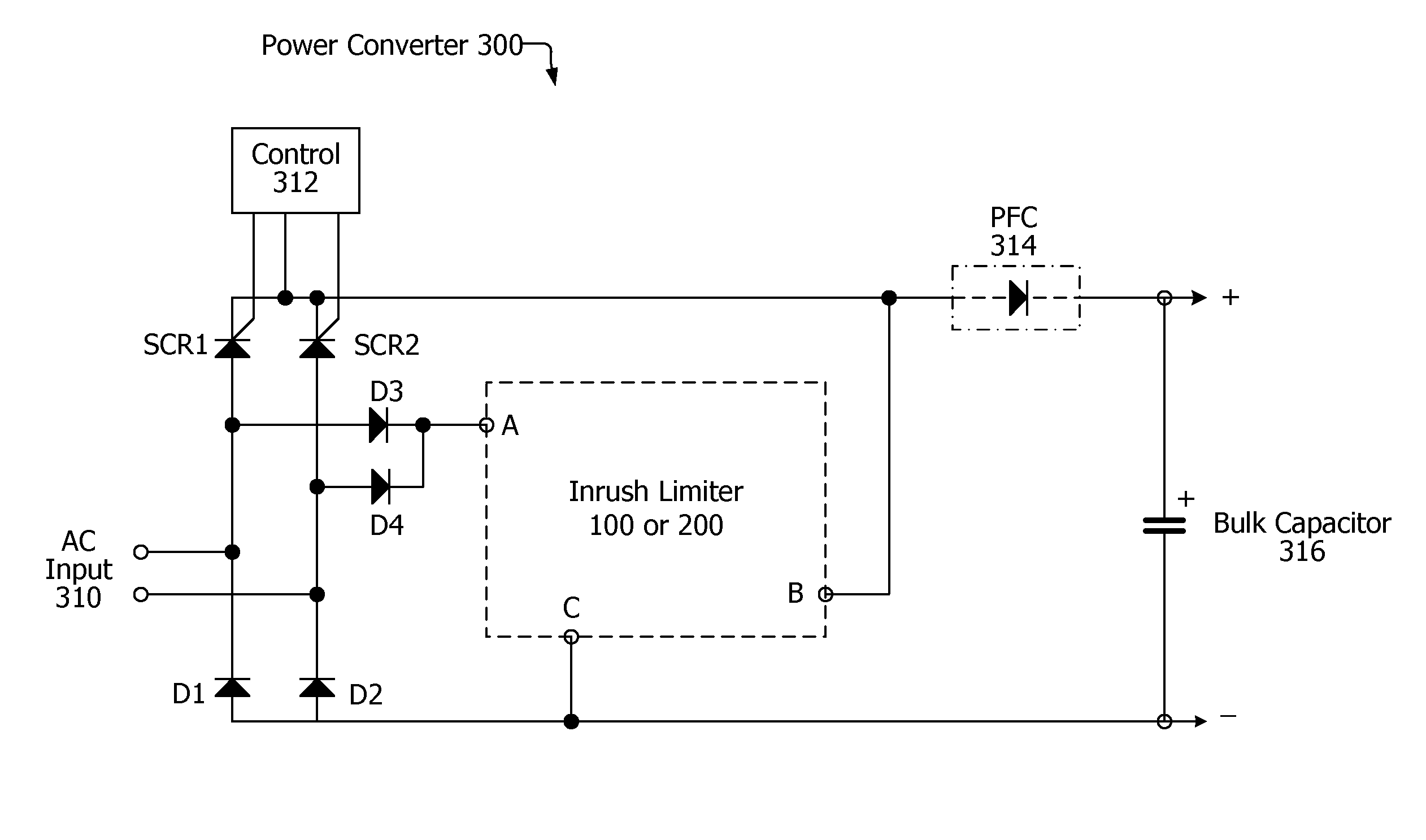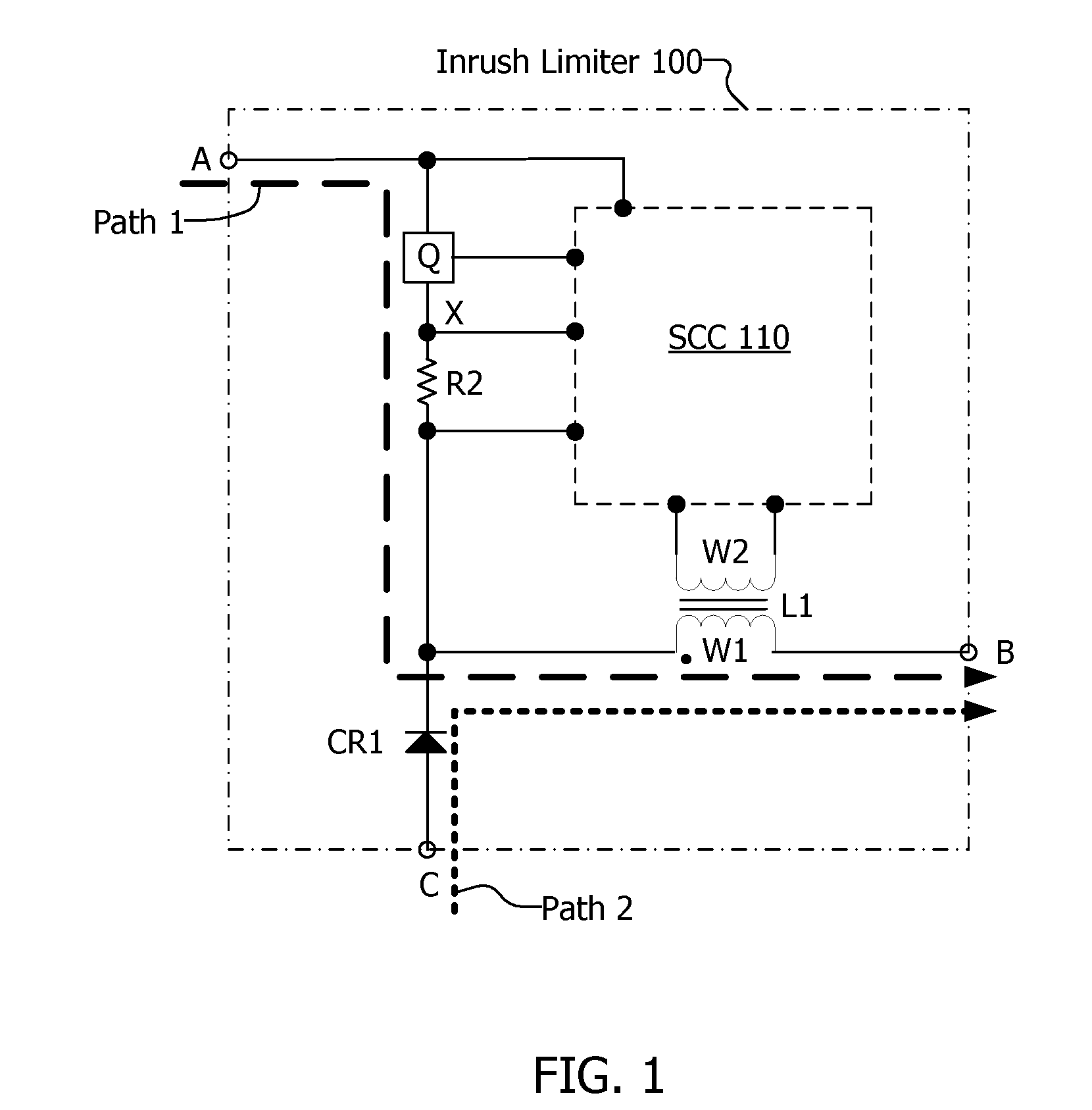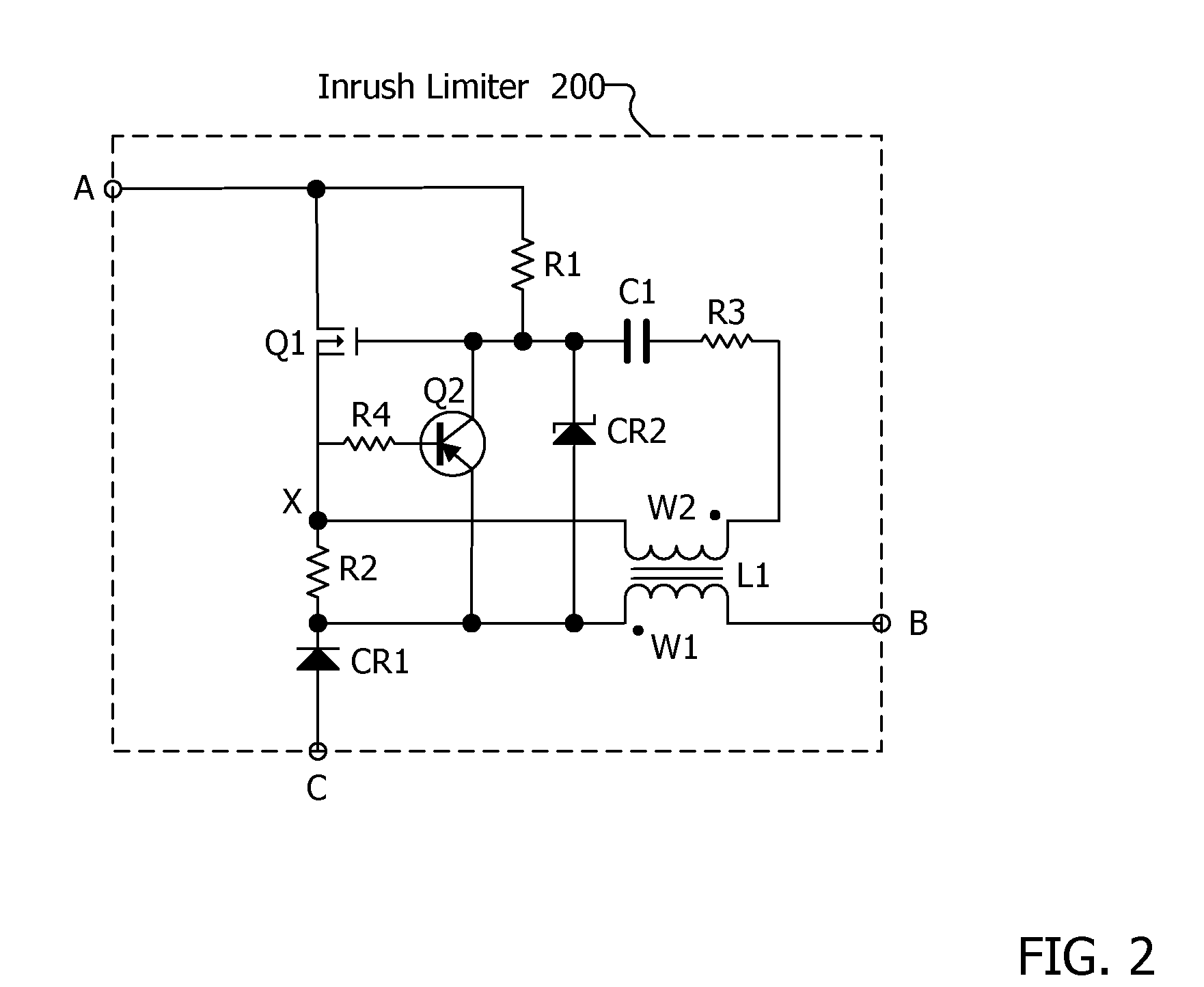Self oscillating inrush current limiting converter
a self-oscillating, inrush current technology, applied in the direction of electric variable regulation, process and machine control, instruments, etc., can solve the problems of high dissipation of resistive inrush limiters and failures
- Summary
- Abstract
- Description
- Claims
- Application Information
AI Technical Summary
Problems solved by technology
Method used
Image
Examples
Embodiment Construction
[0018]Throughout this description, the embodiments and examples shown should be considered as exemplars, rather than limitations on the apparatus and methods disclosed or claimed.
[0019]Referring to FIG. 1, the inrush limiter 100 includes a terminal A, a terminal B and a terminal C. Terminal A is an input normally connected to a power source, terminal B is an output normally connected to a load, and terminal C is a common connection for the return of the power source and load. Current passes through terminal A and exits at terminal B. The inrush limiter 100 includes a switch Q, a current sense resistor R2, windings W1 and W2 on either side of a power inductor L1, a rectifier CR1, and a sensing control circuit (SCC) 110. Switch Q may be a bipolar NPN transistor, FET switch, a MOSFET, and an insulated gate bipolar transistor (IGBT).
[0020]The switch Q, the primary winding W1 on power inductor L1, and the rectifier CR1 may be connected in a configuration similar to that commonly known as...
PUM
 Login to View More
Login to View More Abstract
Description
Claims
Application Information
 Login to View More
Login to View More - R&D
- Intellectual Property
- Life Sciences
- Materials
- Tech Scout
- Unparalleled Data Quality
- Higher Quality Content
- 60% Fewer Hallucinations
Browse by: Latest US Patents, China's latest patents, Technical Efficacy Thesaurus, Application Domain, Technology Topic, Popular Technical Reports.
© 2025 PatSnap. All rights reserved.Legal|Privacy policy|Modern Slavery Act Transparency Statement|Sitemap|About US| Contact US: help@patsnap.com



